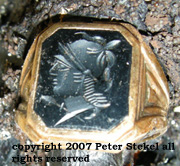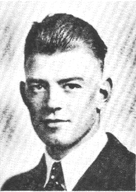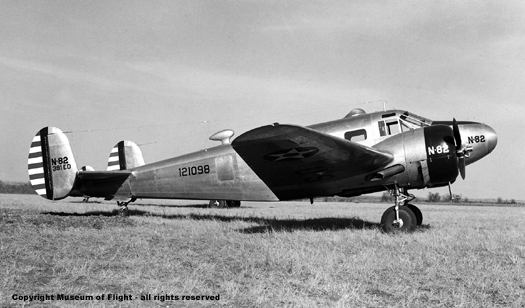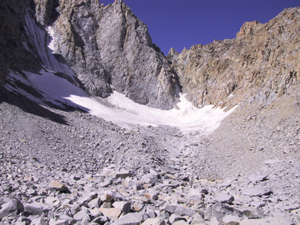| October 30, 2007
[Ruth Mortenson]
Today I contacted Ruth V. Mortenson, the
97 year-old older sister of Cadet John M. Mortenson. Miss Mortenson
lives in the Magnolia neighborhood of Seattle, about a 20 minute drive
from my home in West Seattle. I spoke with her caregiver for the last
three years, Erlinda, who seemed dubious that I would want to come
visit. She kept mentioning visits from CNN [back in 2005-2006 when
Cadet Leo Mustonen was found and being identified] and couldn't seem
to grasp that I would want to talk to Miss Mortenson since the other
body found this year had not be identified. I kept telling her that I
was the person that found the second body. Her reply was that Ruth was
very hard of hearing.
I was able to convince Erlinda that,
living very close to Miss Mortenson, it would be easy for me to come
visit. Erlinda said that Miss Mortenson was up by 10 AM every day and
took naps around 3 PM. We set up an appointment for November 1 at
10:30 AM.
To prepare for my visit, I printed
out photos from my August trip to Mendel Glacier. I figured that Ruth
Mortenson would be interested in seeing where her younger brother was
killed. |
| October 29, 2007
[Cadet John Mortenson's sister, Ruth, found!]
Due to Marge Carpenter's superior research skills
I now know where Ruth V. Mortenson [born June, 1910], John Mortenson's
older sister, lives. And, strangely enough, she lives in Seattle,
about 10 miles away from me.
Between 1941-1945 Ruth Mortenson
taught grade school at the E.C. Hughes School in West Seattle and
between 1978-1984 worked at the Seattle Engineering Department of
Citizen Participation and then the state Department of Transportation.
She was involved in a major West Seattle highway project and got a lot
of press in the area community newspaper - the West Seattle Herald. I
suspect she must have been a local! Ruth Mortenson would have been in
her late 60s-early 70s at this time so it looks like she was able to
retire from one career in education and successfully embark upon
another in public contact. As I think of it, there are a lot of
similarities between the two fields!
Evidently she was living in Magnolia
with her older sister, Anna [Born in 1907, Died 1/14/89] in 1989.
Until I learn more, I suspect that Ruth Mortenson retired from the DOT
and moved from West Seattle to Magnolia in the late 80s. |
| October 7, 2007 [The
Ring] Chuck Perov, along
with his wife, M.J. Bishop, organize a bicycling and wine tasting trip
every year to the Yakima Valley in eastern Washington. The ride serves
as a fund-raising event for the local NPR radio station -
KDNA: "La
Voz del Campesino." Chuck figures the several thousand dollars we
raise every autumn for the station is a great way to make a return to
the local community. KDNA plays music and also sponsors social
improvement programs and provides services that include food
distribution to the hungry and operating a community technology center
for farmworkers.
Given that background itís easy to
figure out the kinds of people on the bike rides. All
professions are represented including dairy farmers, doctors,
teachers, bureaucrats and writers. Chuck is a case worker at the
International Rescue Commission and his social consciousness runs
deep. We are an interesting and eclectic group and conversations tend
to run deep. In an email prior to the trip, Chuck had made sure there
wasnít anyone on the ride that hadnít heard of my August discovery and
plenty of people wanted to know more. One of those people was Mikki
Lippi. Sheís an artisan jeweler and in the course of telling her about
my research, I showed her a photo of the ring.
 |
Mikki examined the ring photo and
couldnít tell me anything beyond her impression that it was a
manís ring and no longer fashionable. She suggested I contact a
friend of hers, Karen Lorene, owner of
FacŤrť Jewelry and Art
Gallery. Located in downtown Seattle, Lorene shows the work of
some 50 or so artists as well as antique and vintage jewelry. |
After our bike ride, I gave Mikki a
few days to lay the ground work and then called Karen for an
appointment.
 |
Meanwhile, Marge Carpenter [my fantastically talented genealogist
and internet researcher friend] was trolling the web for ring
information. She found a bunch of old newspaper advertisements for
menís rings that were very close in character to what I had found
on my aviatorís finger.
Most of the rings ranged in price
from $12.95 to $33.75. I was grateful for the data but it also
suggested that the ring would turn out to be nothing special - not
a family heirloom or something handed down from father to son. |
I met Karen a week later and after
outlining the story basics, showed her my photos. Seeing the
disappointment in her face, I knew my supposition wasnít incorrect.
She confirmed the ring was a popular style in the era between
1930-1940 and that the stone was most likely hematite or black onyx
though she leaned towards the former since that was more the standard
at the time for the intaglio style. She also dismissed it as nothing
special except to the owner. When I asked Karen about the special
jewelry men wore in the 40s she replied that, "His watch and his ring
were probably his jewelry. Thatís what men got from their fathers. One
at high school graduation and the other at college, if he went to
college."
"Thereís no particular symbolism to
the design," she said, pointing out that it was either a Greek or
Roman soldier. "Itís a manís ring. A warrior." What a perfect
explanation for a young man going off to war. And she added that
intaglio rings were the most common manís ring of the period. Karen
felt that, though the ring wasnít likely to be passed to him it still
could have been a present. From a girlfriend, maybe?
Next, she turned her eye back to the
craftsmanship and ring quality and dismissively told me it hadnít much
value. As for the gold, it was probably 10k like the cheaper versions
Marge found in the newspaper advertisements and now only worth, "$300
- mostly to collectors." Not jewelry collectors but to collectors of
memorabilia. "The ring would have more value to them if a photo
appeared in a book," she added. As for other options, "A 14k gold ring
would have a $600 value today and an 18k gold ring, rare, would be
worth around $800."
Even without having it in hand, she
still felt confident the ring was die-struck. That is, the ring was
punched out of a flat sheet of gold and soldered in back. The hematite
carving wasnít done by a master but not done by machine either.
"Probably a medium quality carver who went, zip-zip." Her fingers
danced back and forth in a limited number of graceful movements to
demonstrate for me what she meant. Then, removing several pieces from
a display case, Karen showed me the work of a master carver and, for
comparison, something less than master. Even my poorly developed sense
of style could instantly see the difference in quality, workmanship,
design and detail.
I thanked her gratefully for her time
and she was happy to have helped. She said, "Itís not much and itís
generic knowledge."
"Yes," I agreed, "but not to someone
like me."
"Every little bit of information
helps, doesnít it?" she replied.
That's certainly how I felt.
|
| October 1, 2007 [A
Possible Television Special]
I spoke with Craig Miller today. He's an
independent radio and television producer [www.voxterra.net and
www.californiareport.org]
interested in doing a documentary story about the "missing airmen" for
a National Geographic TV special. "This is a story that covers all the
bases," he told me. "Science, forensics, a very human component,
adventure..."
At this point Miller isn't sure if
the program would be entirely about the Mendel airmen or if it would be one of
maybe three or four different stories - all tied together by the
Sierra Nevada and lost or mysterious airplane crashes. If he is able
to sell the idea, I might be hired on as a consultant to take him and
his crew to the glacier. |




